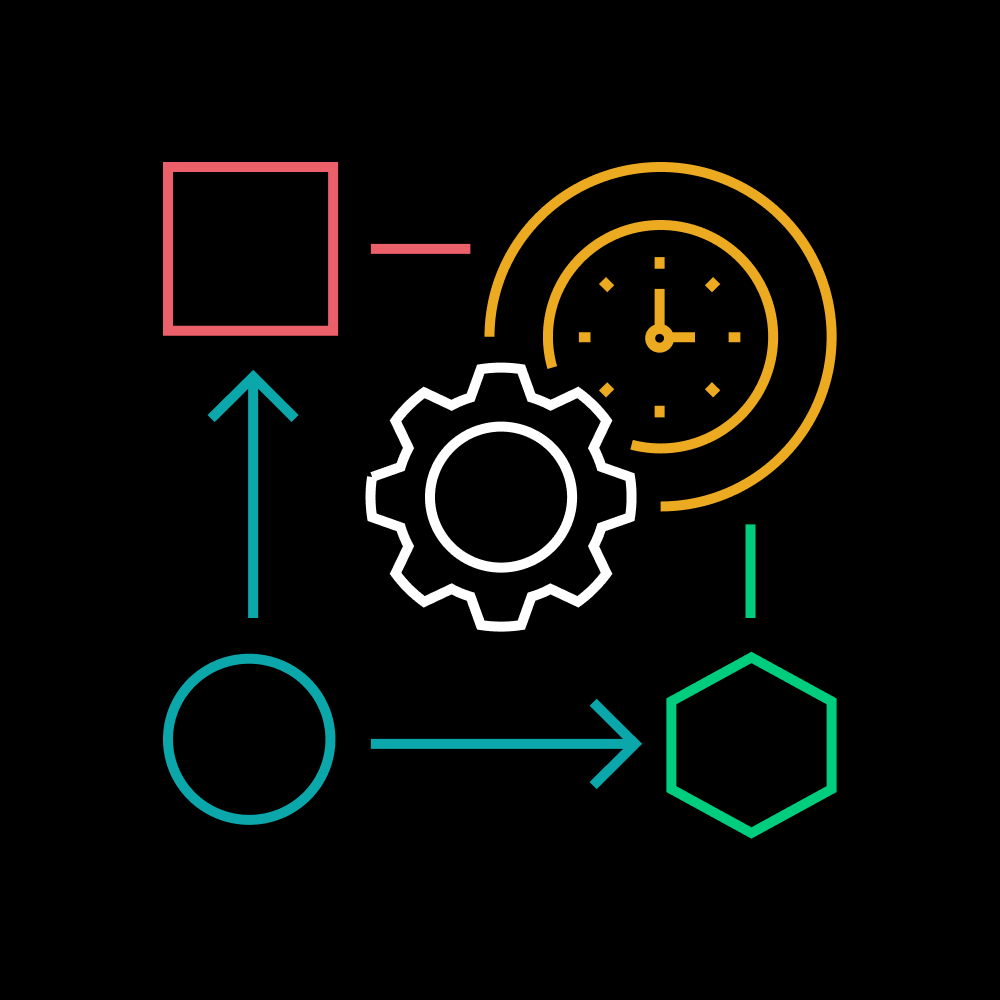
Raj Choudhury on “work from anywhere” — and why the future of work is borderless
Can industries like manufacturing and healthcare embrace flexible work? A pioneering Harvard researcher says yes.
Posted December 15, 2021 by Eliza Sarasohn
Harvard Professor Prithwiraj (Raj) Choudhury has been studying the effects of flexible and remote work for almost a decade. Long before he wrote “Our work from anywhere future,” the December 2020 Harvard Business Review cover story so influential that C-suite executives still keep a paper copy on their desks for reference, even a full year after its publication. And long before the pandemic made flexible work a central component of the day-to-day lives of knowledge workers around the globe.
As the Lumry Family Associate Professor at Harvard Business School, Choudhury is a pioneer in researching what happens to productivity when companies let employees work from anywhere. He recently joined a Future Forum executive roundtable (from a kitchen table in Calcutta, where he was visiting his parents for the first time in nearly two years) and gave us a preview into what the future of “work from anywhere” holds.

Decision-makers at companies around the world rely on your research as a guidepost for developing new workforce policies. Tell us more about your focus of study.
“Work from anywhere” (WFA) is a form of remote work, but it’s conceptually quite different from working from home. Prior to the pandemic, when working from home, folks were still coming into an office a few days a week, which meant you still had to stick to the geography of the office.
But work from anywhere awards the worker with geographic flexibility to choose which town, city, state, or maybe even which country to live in. So that’s a big win for employees.
And the business case for why organizations should use work from anywhere is, firstly: you can hire from anywhere … programmers from Kenya, options traders from Poland — the world becomes your labor market.
Secondly: under some conditions (and I’m an academic, so I’ll never say “all the time”) WFA can lead to productivity gains. For example, when the U.S. Patent Office embraced work from anywhere, productivity went up four percent — and stayed there. And this is on top of the productivity gains they had already seen after allowing employees to switch from working in the office to working from home.
Work from anywhere can lead to a more inclusive workforce.
Thirdly: WFA can lead to a more inclusive workforce, especially on the dimension of gender. We’ve known for decades that women lose out on career opportunities because of geography — you get a great promotion or job, but you can’t accept it because your spouse or kids aren’t able to move. Work from anywhere allows for more upward mobility for everyone.
And finally, for the CFOs, there are real estate and utilities savings.
In our research at Future Forum, we’re seeing a growing adoption of the hybrid working arrangement. How can companies offer work from anywhere work within a hybrid context — is that even possible?
I love this question — and the answer is yes — I’m super fascinated by how hybrid can embrace work from anywhere. For example I’ve studied the 25 by 25 model from the tech company TCS. What this means is every worker will be in the office 25% time, but that 25% is decided not by the worker, not by the company, but by each team.
So every team is empowered to decide what kind of co-location rhythm works best for them. Some teams would say one day a week, some teams would say one week a month, and some teams would say a few weeks each quarter.
And a question I always get about that is “how do we share knowledge, how do we reduce meetings, how do we not find ourselves in an infinite set of meetings lasting through midnight?”
One of the solutions I’ve discovered from remote-first companies such as the Gitlabs of the world is to codify knowledge. If you can move the organization in the direction of reading and writing knowledge rather than asking and listening, then you can reduce meetings and work asynchronously. This is extremely important to make a work from anywhere model work.
If you can codify knowledge, you can reduce meetings and work asynchronously.
Gitlab conducted this codification exercise by creating what is essentially an internal wikipedia that answers every question that starts with word “how” — how do we file an invoice here? How do we hire here? How do we set salaries here? And they keep that codified handbook fresh — but for that you need incentives, because no one will do this work if they’re not incentivized.
With the “work from anywhere” model, how do leaders orient, socialize, and mentor their employees?
I would point to a very practical tool — the “virtual watercooler.” The argument is that if you randomly meet other employees, you can broaden your social connections. And this is potentially even more powerful than meeting people in the office and having serendipitous conversations at the real watercooler.
This is because in the office, research shows we tend to meet the same people every day — typically people who are seated around us. But virtual water coolers are different. This is not a zoom happy hour, which tends to bring the same 10 people every week. This is an HR coordinator or a piece of code — like the Donut application on Slack — that randomly generates meetings among people who would have never otherwise met.
Virtual watercoolers can be even more powerful than meeting people in person.
Last year I ran an experiment with a large global organization where we orchestrated virtual watercoolers for a cohort of interns, and we arranged meetings for those interns with very senior people. These are people the interns would have never normally met — you know I’ve never heard an intern tell me “today I pressed the elevator button and I got to chatting with the CEO.”
What we found is that the interns who met the senior managers were more likely to perform better and more likely to get a job offer at the end of the internship. They had more positive attitudes toward remote work and toward the organization.
The results were greatest when the intern and the senior manager were demographically matched. So, it is important to make sure that underrepresented people in your workforce have opportunities to meet senior managers with a similar background. It also proved useful to train senior people to be the icebreakers, so the conversations can flow more naturally.
Where is your research headed today?
I’ve been focusing on how work from anywhere can be reimagined and applied to industries that you wouldn’t think would be able to work remotely. For example, take healthcare. Plenty of hospitals have embraced telemedicine. But many are now thinking of moving part of their emergency room system into a work from anywhere ER.
A former doctoral student looked at this phenomenon of remote emergency rooms in a big city hospital system. What he found is that if you move the doctors who are responsible for monitoring the vitals of the patients and determining which cases to focus on off of hospital premises, and you allow them to work from anywhere, patient outcomes actually improve. Physicians reported they were able to move the medical attention to where it was deserved, because now they were no longer having to run up and down the stairs trying to figure out what was going on. They could sit at the computer, look at the vitals, and make that judgement of which patient would benefit from additional attention.
If you allow ER doctors to work from anywhere, patient outcomes actually improve.
I am also taking a close look at manufacturing. Five years back, if you had asked me would manufacturing workers be able to work from anywhere, I would have probably said no. But I’m now working with a multinational consumer product goods company that is ahead of the frontier of thinking about this very actively.
What we have found is if you put sensors on the factory floor, assembly line, or supply chain to monitor a host of measurements in real time — temperature, pressure, flow rate, bottlenecks, etc — you can then send that data to a cloud and use machine learning predictive applications to send predictions to control engineers. In the past, the control engineer would have needed to sit in a control tower in the center of the factory, but now they can work from anywhere — they can literally run the entire factory from the kitchen table.
What we saw in the pilot we conducted was that this process also lead to significant efficiencies and cost savings, because now, machine learning and predictive analytics can analyze data and codify best practices not just from one factory but from many, leading to much better outcomes.
There’s also schedule flexibility such as fractional shifts and shift-swapping. Consider the “digital twins model.” You can create a digital replica of the physical plant or supply chain that exists in the cloud and run it at least partially from anywhere. Then you can pair two people as twins who share the on-site and offsite parts of the job. So for example, on an Exxon mobile oil rig, one of the pair can work on site half of the time while their twin is working from anywhere, using the digital replica to run predictive maintenance, and then they can swap.
Who within an organization should be assigned to figure out and lead these changes?
One of the best practices that I really like is designating a “Head of Remote.” Having that formal position brings together a team and makes it clear they are accountable for putting together the playbook. That leader can synthesize input from across the organization as different departments think through remote work policies, digital investments, and about this entire transformation.

